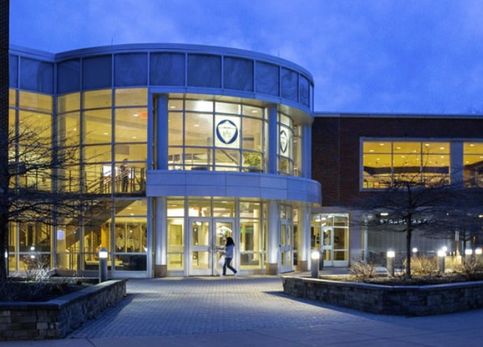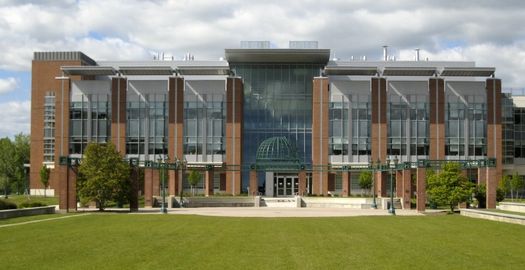
It isn’t entirely surprising to see why SUNY receives an overwhelming number of applications every year. With a whopping 110% year-over-year increase, the number of applications went from over 97,000 to over 204,000 for fall 2023. Thanks to the out-of-state tuition match option this season, students from other states, such as Connecticut, California, Massachusetts, Illinois, New Jersey, Vermont, and Pennsylvania, also received an opportunity to apply to a SUNY institution. So, what is a SUNY College? And how does the system work? Here’s more on the subject.
What Is a SUNY College?
Serving as the biggest comprehensive system of colleges, community colleges, and universities, the State University of New York (SUNY) has over 30,000 faculty members and about 7,660 certificate and degree programs.
Operating under chancellor John B. King, SUNY has administrative offices in Albany and satellite offices in Washington, D.C., and Manhattan. Neighboring the State University of New York Upstate Medical University, the largest SUNY campus is that of SUNY College of Environmental Science and Forestry. Most SUNY colleges are outside New York City, with many of them in rural areas. All in all, there are 64 SUNY institutions of different types and sizes.
History of SUNY
Established in 1948, the State University of New York’s creation can be credited to Governor Thomas E. Dewey’s efforts. Owing to the growing demand for a State University between 1946 and 1948, legislative implementation was finally facilitated. However, it was during Governor Nelson A. Rockefeller that the system expanded immensely. It was mainly because he took a personal interest in the construction and design of SUNY facilities throughout the state.
Initially, the system only had about 29 unaffiliated institutions and around 11 teachers’ colleges. Despite these colleges’ unique backgrounds and histories, they eventually came together for a single purpose. It was to serve the State of New York.
In What Ways Has SUNY Contributed to America?
There are a number of ways SUNY has contributed to the country’s vast education system. Here are some of them.
It Helped In the Discovery Of the Lyme Disease Bacteria
Lyme disease, which is one of the most common tick-borne diseases in North America, wasn’t vastly studied until researchers at Stony Brook University finally made a leap. They were among the first ones to not only study the bacteria but also isolate it.
It Has Millions of Alumni
Today, SUNY has roughly three million alumni members. This goes on to show the collective impact the system has had not only on the country but also on the rest of the world.
It Has 8 Nobel Laureates
The awardees were among those who studied and taught at SUNY institutions in subjects such as medicine, physiology, and physics. The first winner to ever come out of SUNY was Dr. Chen Ning Yang in 1957.
It Has Nearly Half a Million Students
Across 64 different campuses, SUNY has about half-a-million students in the United States enrolled in various programs.
It Has a Remarkable Commercial Invention to Its Name
Did you know that SUNY played a critical role in enhancing the scanners that turned barcodes into information? Along with the National Science Foundation, some researchers from Stony Brook University played a key role in doing it.
It was at the beginning of 1990 that Theo Pavlidis, a developer, developed a brand-new algorithm. It enabled the scanner to read a bar code whenever it was hard to read.
Technological Innovation
When it comes to answering the question “What is a SUNY college?” one can’t help but acknowledge the role the institution has played in bringing technological advancements and manufacturing jobs to the U.S.
The University of Albany’s College of Nanoscale Science and Engineering facilitates the world’s only production-ready wafer research. It has opened doors for more information to fit on small devices, and it’s certainly a massive achievement for SUNY.
Famous Designers Hail From SUNY
SUNY’s contribution to the United States isn’t only limited to technological advancements. It has also played a crucial role in innovating the marketplace. The two most notorious examples of the institute are Michael Kors and Calvin Klein.
Their global brand identities today are linked to the massive experience they garnered during their time at the SUNY Fashion Institute of Technology. Today, their brands collectively represent $10 billion worth all because of how well they fused business, culture, and fashion.
SUNY Alumnus Invented a Heart Pacemaker
Wilson Greatbatch, an alumnus of SUNY, created the first-ever implantable heart pacemaker and the first lithium-iodide battery to power it. Greatbatch died at the age of 92 in 2011 with more than 350 patents to his name and a spot in the National Inventors Hall of Fame.
SUNY Has a Notable Patent Portfolio
Currently, SUNY is 14th among U.S. universities and colleges in terms of receiving royalties for various industry-licensed inventions. Additionally, it ranks 8th among the patent-generating universities in the U.S.

List of SUNY Schools
Comprehensive Colleges
- Buffalo State College
- SUNY Potsdam
- SUNY Fredonia
- The College at Brockport
- SUNY Empire State College
- SUNY Cortland
- SUNY New Paltz
- SUNY Geneseo
- SUNY Oswego
- Purchase College
- SUNY Plattsburgh
- SUNY Old Westbury
- SUNY Oneonta
University Centers
- University at Albany
- Stony Brook University
- Binghamton University
- University at Buffalo
Technology Colleges
- SUNY Cobleskill
- SUNY Morrisville
- Fashion Institute of Technology
- Alfred State College
- SUNY Delhi
- Farmingdale State College
- SUNY Maritime College
- SUNY Canton
CUNY Vs. SUNY
What Is a CUNY School?
CUNY, short for the City University of New York, comprises public colleges in the city of New York. While this system’s mission is also to provide students with affordable, high-quality education, its colleges are all located within New York. Furthermore, it has both community and four-year colleges with over 1,750 degree programs.
There are roughly more than 250,000 students attending a CUNY school currently. Here’s a list of its major schools located in five boroughs.
Four-Year Colleges
- Lehman College
- York College
- The City College of New York
- Queens College
- Baruch College
- Hunter College
- New York City College of Technology
- Brooklyn College
- Medgar Evers College
- John Jay College of Criminal Justice
- College of Staten Island
Differences Between CUNY and SUNY
While both systems are dedicated to providing Americans with a fair chance of accessing quality education, they also have a number of differences. For one, SUNY has more schools than CUNY. It also has the largest student body and faculty. While CUNY is only present in 5 boroughs, SUNY is present throughout New York.
However, in terms of ethnicity, CUNY has a far greater number of Black and Latino students. Its community colleges are also comparatively more affordable than SUNY community colleges.
Academic Standing
While both CUNY and SUNY provide excellent education opportunities to the masses, SUNY schools, especially university center schools, rank higher in terms of academic reputation. Furthermore, SUNY schools are harder to get into than CUNY schools, and they also have a higher graduation rate compared to CUNY schools.
In a way, it can be concluded that these high graduation rates represent SUNY schools’ better policies to help students succeed. However, this reputation also depends on the field one chooses to study. Hence, it’s better to look into how well a preferred college teaches a given major than make universal comparisons.
Which One Is More Affordable?
While both CUNY and SUNY schools take pride in being affordable for students in New York, their fee structures vary. Tuition for 4-year programs for in-state students at both schools can go up to $7,000 annually.
CUNY and SUNY also provide scholarships to students that help bring down the fee to $4,000 per year for CUNY students. Since most CUNY students are commuters, they do not have to deal with the hassle of paying for the board and room either.
On the other hand, it isn’t that easy to determine annual costs for a SUNY student. While these colleges are comparatively more affordable than public colleges, the costs vary depending on the school. Some require freshmen to live on campus, while others don’t. However, generally, the fee is lower for out-of-state students.
Fortunately, due to an agreement of 2017, students who have families making less than $125,000 a year can have their tuition fees waived at CUNY and SUNY schools. Under this “Excelsior Scholarship,” students are not required to stay or work in New York State for the time they receive the tuition award.
Wrapping Up!
Now that we have the answer to the question “What is a SUNY college? ” it’s important to acknowledge the system’s contributions to the United States of America. However, its contributions are not only limited to academics. Many of its alumni are running successful businesses and industries across the world.
Many are also contributing to battling illnesses and running clinical trials across the globe. Today, it successfully runs 64 schools, a mix of 29 campuses, and five statutory colleges. Some of them include health science centers, research universities, specialized and technical colleges, liberal arts colleges, land-grant colleges, and about 30 community colleges.
